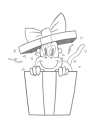Check out the premium course for additional lessons, demos, assignments and critiques!
Choosing Movement and Asymmetry
Figures feel most convincing to me when they exhibit a type of movement. So, I choose an approach that incorporates everything I've learned about the figure's parts while emphasizing asymmetry.
Asymmetry leads to rhythm, which is essential for creating dynamic and engaging figure drawings. By offsetting curves and apexes in the body, I create a natural interest and movement for the viewer's eye.
Avoiding Symmetry for More Dynamic Drawings
When we focus on capturing the shape by drawing the outside contours, we often end up with symmetrical and stiff figures. Our brains naturally want to balance things, but symmetry can lead to static and lifeless drawings.
Instead, I consciously do the opposite. I focus on asymmetry, and the creation of rhythm. I'm not drawing the outside of the leg or the back of the leg, I'm drawing an idea about its position, using asymmetry to convey movement.
Representing Parts with Lines
In my approach, every line represents a part. The spacing between lines represents the joints or transitions between parts. I'm not drawing the front, back, or contour, I'm simplifying and abstracting each part into a single line.
I primarily use C-curves and S-curves to create movement through offset apexes. I avoid parallel forms, as they create closure and reduce the sense of movement.
Practicing Asymmetrical Curves
If you find this approach challenging at first, it's helpful to practice drawing asymmetrical curves. Fill pages with long, wandering pathways, focusing on creating engaging rhythms. This exercise helps develop the habit of creating linked and offset curves.
Using Simple Lines and Wrapping Lines
I use only three types of lines in my gesture drawings:
- Straight lines: Used sparingly, mostly for areas of weight or bone.
- C-curves: Primary lines for creating movement.
- S-curves: Used for dynamic transitions and flowing movements.
I introduce a bit of economy with line use, keeping lines minimal but effective. I also use wrapping lines (cross-contours) to indicate the basic 3D tilt of each part. These notational lines help convey the figure's form and perspective.
Steps for Gesture Drawing
1. Start with the Head
I begin with the head, using a simple ball shape. It's a natural focal point and a good starting place for the viewer's journey through the figure.
2. Draw the Spine with Four Lines
I use four lines to represent the spine:
- Cervical curve (neck)
- Thoracic curve (upper back)
- Stretch line (front of the body)
- Lumbar curve (lower back)
These lines help me understand the inside of the figure and capture its movement.
3. Add the Pelvis and Weight-Bearing Side
I identify the weight-bearing side of the pelvis, usually the higher side due to the shift when weight is on one leg. I represent it with one line.
4. Draw the Limbs
Each limb gets about two to three lines:
- Upper leg (femur)
- Lower leg
- Knee or elbow transition line (if needed)
I focus on maintaining rhythm and asymmetry in the limbs.
5. Sketch the Feet
I use simple shapes for the feet, often starting with a triangle. I adjust the shape based on the foot's perspective (front, side, or three-quarter view), using curves to show movement and contact with the ground.
6. Add the Arms
The arms are drawn with similar principles:
- Shoulder line
- Upper arm
- Forearm and hand (often combined into one line)
I ensure that every line leads to another, creating a continuous flow throughout the figure.
Emphasizing Rhythm and Movement
Throughout the drawing, I avoid vertical and horizontal lines, opting for diagonals to keep the figure active and full of motion. I use asymmetry in line lengths, short, medium, and long, to enhance the sense of movement.
Adjusting and Personalizing the Approach
While I follow these steps, I also allow myself to make adjustments and personalize the approach. If something isn't working, I can move lines around or try different rhythms. The goal is to create a drawing that is interesting and conveys the desired emotion or story.
Practicing with Different Views
This approach works from any angle, front, side, back, or three-quarter views. Practicing with different views helps reinforce the method and improves understanding of the figure's form and movement.
Using Center of Gravity for Dynamic Poses
I sometimes use the center of gravity to adjust poses:
- Plumb line from the pit of the neck to the medial ankle helps identify balanced poses.
- Shifting the center of gravity can create more dynamic and unbalanced poses.
* * *
By focusing on asymmetry, rhythm, and movement, I create dynamic and engaging figure drawings. Using simple lines to represent parts and emphasizing curves over contours allows me to capture the essence of the figure without getting bogged down in details. This approach helps me tell a story with my drawings and keeps them full of life and motion.
Check out the premium course for additional lessons, demos, assignments and critiques!









